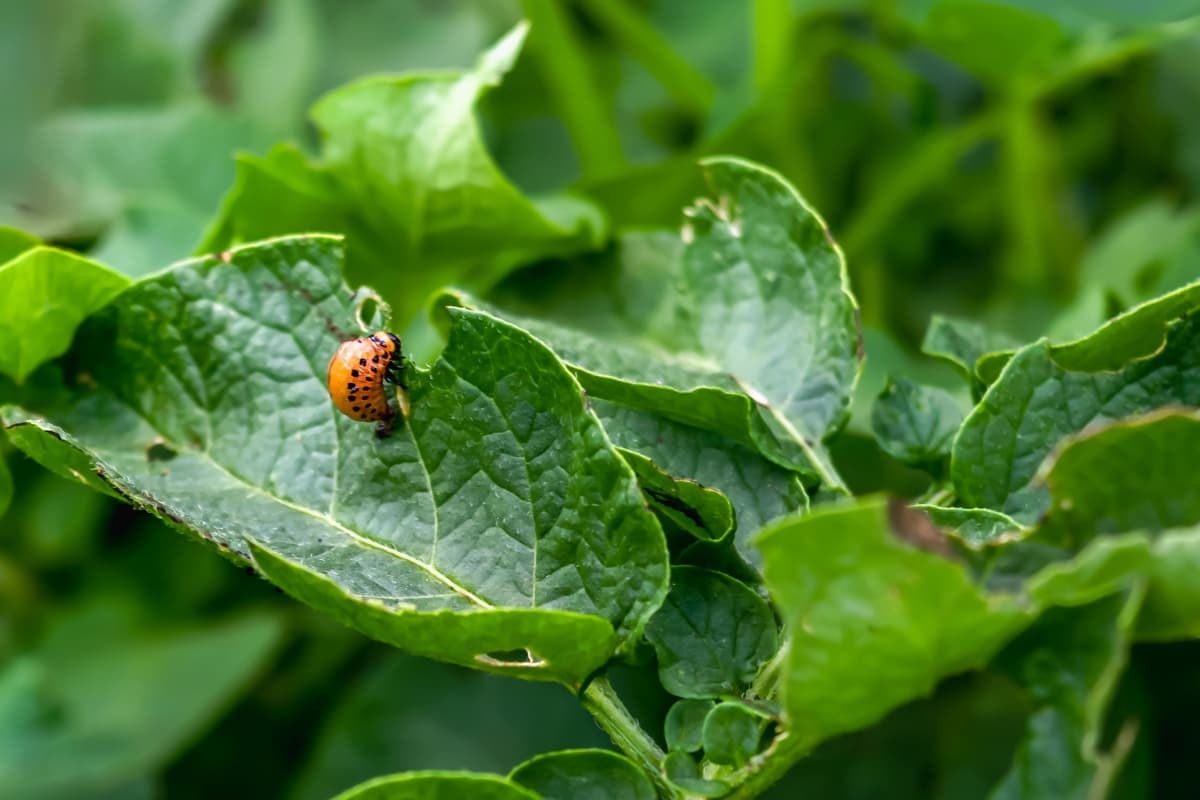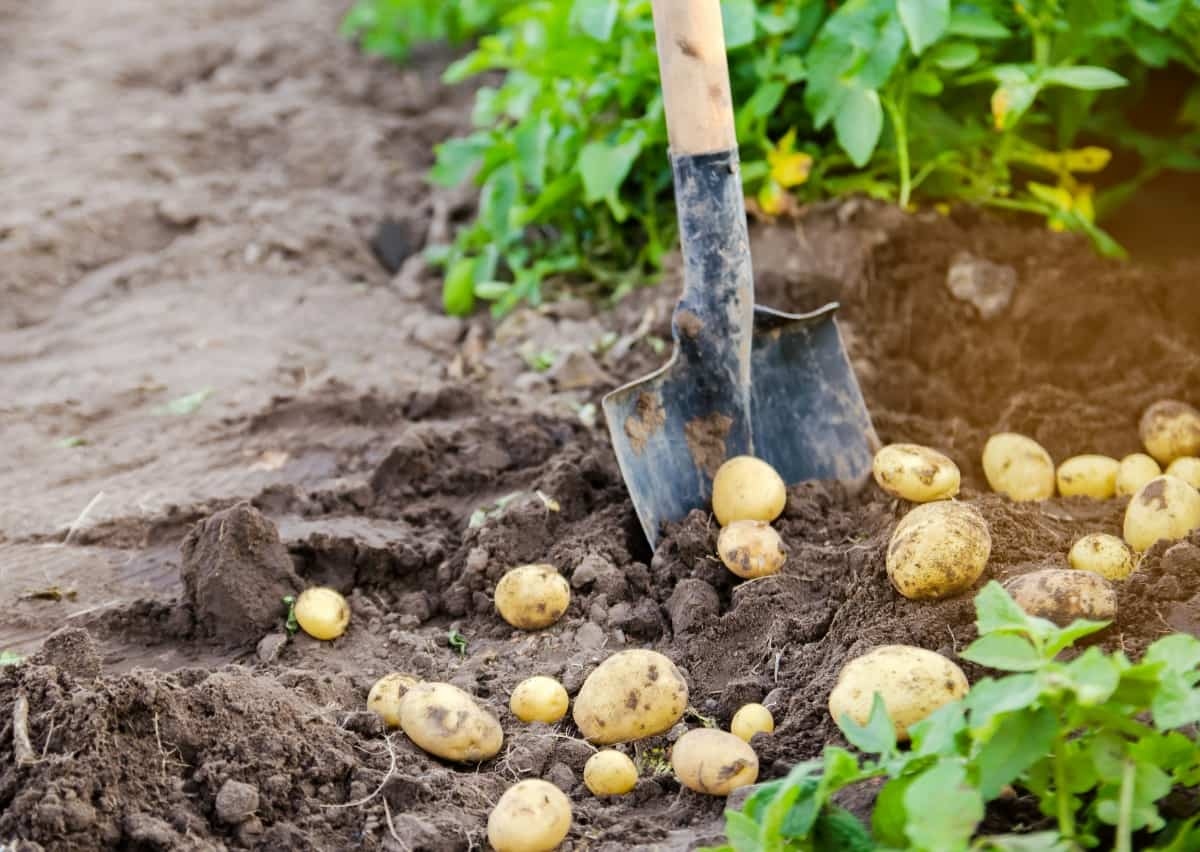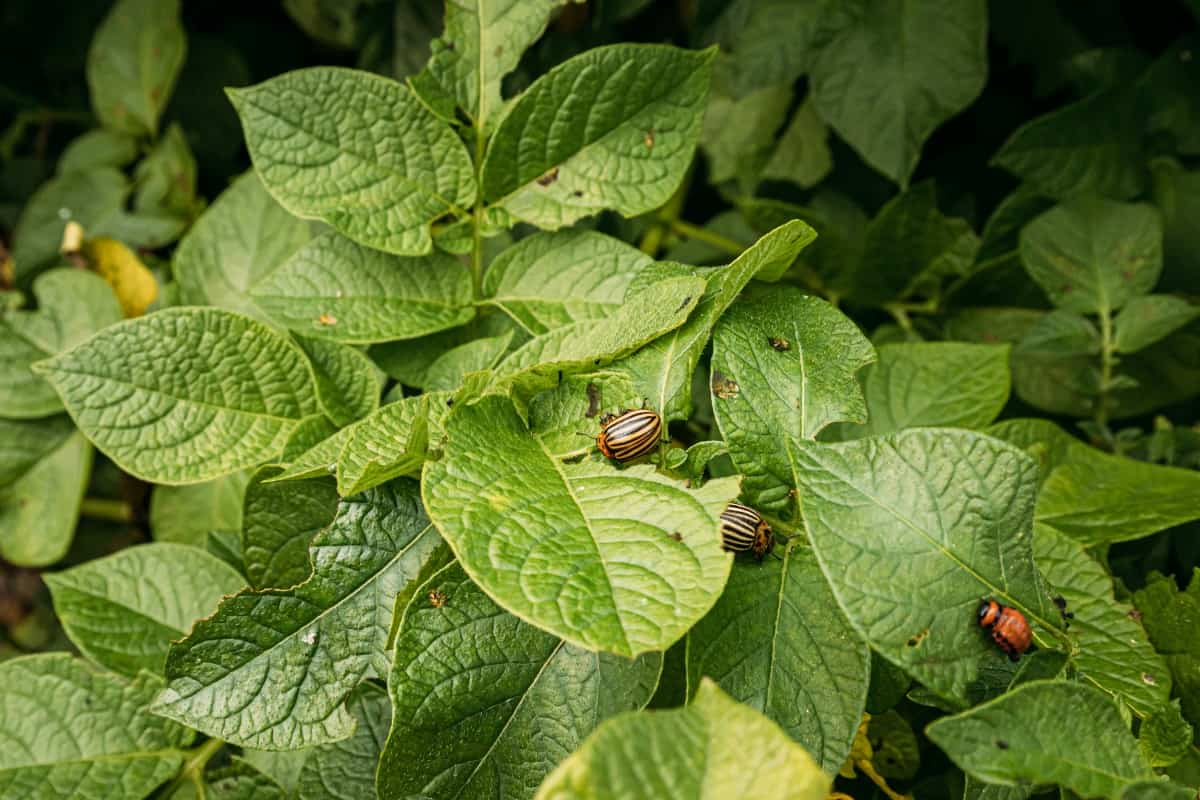The cultivation of potatoes is a significant component of agriculture worldwide, but various pests and diseases often threaten the crop. Conventional methods for managing these threats often involve synthetic pesticides, which can harm the environment and human health. Fortunately, organic approaches offer more sustainable methods to deal with these threats, aligning with a broader trend toward environmentally-friendly agriculture. Here we provide an in-depth look at these organic practices, discussing how to identify, prevent, and manage common potato pests and diseases.

Managing Potato Pests and Diseases Organically
Identifying Pests and Diseases in Potato Crops
Identification is the first critical step in managing pests and diseases. It’s crucial to understand the signs and symptoms your potato crop might exhibit when threatened. Potato pests commonly include insects such as aphids, Colorado potato beetles, and wireworms, which can damage foliage and tubers. These pests often leave visible signs of their activity, such as bite marks or eggs on the leaves. Diseases affecting potatoes commonly include blight, scab, and bacterial wilt, which can present as discolored or wilting leaves, tuber lesions, and general plant stunting.
Organic Pest Management Strategies
Organic pest management involves strategies that aim to control and mitigate the population of harmful pests while preserving the ecosystem’s overall health. These strategies largely fall into biological control, cultural control, and mechanical control.
Biological Control
Biological control involves using living organisms, like beneficial insects, to control pest populations. For instance, ladybugs, spiders, and predatory beetles can help control aphids and Colorado potato beetles. Another form of biological control involves pathogens, parasites, and predators targeting potato pests. An example is using the beneficial nematode species Steinernema feltiae, known to parasitize and kill various insect larvae, including wireworms.
Cultural Control
Cultural control techniques involve changing farming practices to make the environment less favorable for pests. These can include crop rotation, intercropping, and maintaining soil health. Crop rotation, for instance, can help reduce pest populations by breaking their life cycles. Planting different crops in the same field over several seasons can disrupt pests specific to potatoes. Intercropping, or growing different crops nearby, can help deter pests and attract beneficial insects. Lastly, maintaining soil health through organic matter addition and proper irrigation can foster a robust potato plant that can resist pest attacks.
Mechanical Control
Mechanical control techniques physically remove or block pests. This can involve hand-picking beetles off plants, using barriers such as row covers, or employing traps. For example, yellow sticky traps can capture aphids, and beetle traps that use pheromones to attract Colorado potato beetles can also be employed.
Organic Disease Management Strategies
Fungi, bacteria, and viruses typically cause potato diseases. Organic disease management primarily involves prevention because once a plant is infected, it’s often difficult to cure. However, some organic methods can be used to help control the spread of diseases.
In case you missed it: A Comprehensive Guide to Cultivating Kennebec Potatoes from Seed to Harvest

Resistant Varieties and Healthy Seed Stock
Choosing resistant varieties is one of the most effective ways to manage potato diseases. Many modern potato varieties have been bred to resist common diseases like blight or scab. Starting with healthy seed potatoes is also crucial. Seed potatoes should be certified disease-free and preferably from a reputable source.
Cultural Practices
Like pest management, cultural practices play a significant role in disease management. Crop rotation can help prevent the buildup of disease-causing organisms in the soil. Healthy soil is also crucial in disease prevention. By maintaining soil fertility and ensuring good drainage, you can prevent conditions that encourage disease development. Avoid overwatering as it can promote fungal and bacterial diseases. Implementing proper sanitation practices, such as cleaning tools and removing plant debris, can help prevent the spread of diseases.
Biological Control
In some cases, beneficial microorganisms can help control potato diseases. For example, some Bacillus and Streptomyces bacteria are known to suppress the potato scab pathogen. These beneficial bacteria can be added to the soil through biofertilizers or by applying compost and other organic matter.
Organic Fungicides
Organic fungicides can help manage diseases like potato blight if preventive measures are insufficient. Copper-based fungicides are commonly used in organic farming. However, they should be used cautiously due to their potential toxicity to beneficial soil organisms. Other organic-approved fungicides include those based on sulfur and biological agents like Bacillus subtilis.
Implementing an Integrated Pest and Disease Management Plan
Ultimately, the best approach to organically managing potato pests and diseases is to implement an integrated pest and disease management (IPDM) plan. An IPDM plan combines various methods to manage pests and diseases in an environmentally sustainable and economically feasible way.
Monitoring and Record Keeping
Regular monitoring of your potato crop is crucial. Early detection can help you respond quickly and effectively to pest and disease outbreaks. Record keeping is also an important aspect of IPDM. Keeping track of what pests and diseases occur and when and where can help you understand their patterns and develop more effective management strategies.
Combining Different Strategies
Different management strategies can often be combined for a more effective approach. For example, you can plant a disease-resistant potato variety and use organic fungicides to manage blight. Or, you can implement crop rotation and release beneficial insects for managing potato beetles.
Consideration of Environmental and Economic Factors
An IPDM plan should be both environmentally sustainable and economically viable. Organic methods can be more expensive or labor-intensive than conventional methods, so it’s important to consider the costs and benefits. Nonetheless, don’t forget that organic practices carry enduring advantages, including enhancing soil vitality and minimizing harm to the environment.
In case you missed it: How to Grow Potatoes in Greenhouse: A Step-by-Step Guide for Seed to Harvest

Conclusion
Organic management of potato pests and diseases can be a challenging task. It requires a good understanding of pest and disease life cycles, careful observation, and timely intervention. However, with a well-planned and integrated approach, it’s possible to grow healthy and productive potato crops without synthetic pesticides and fungicides. The benefits of such an approach go beyond the farm, contributing to a healthier environment and a more sustainable food system. Remember that every farm is unique; what works best depends on your specific conditions and resources.
- Feed Your Flock for Less: Top 10 Tips to Save on Chicken Feed
- Ultimate Guide to Ossabaw Island Hog: Breeding, Raising, Diet, and Care
- Hatching Answers: The Top 10 Reasons Your Chickens Aren’t Laying Eggs
- Eggs and Economics: Breaking Down the Cost of Raising Backyard Chickens
- Defend Your Greens: Proven Methods to Keep Iguanas Out of Your Garden
- Ultimate Guide to Cinnamon Queen Chicken: A Comprehensive Guide for Beginners
- Ultimate Guide to California Tan Chicken: Breeding, Raising, Diet, Egg-Production and Care
- Ultimate Guide to Marsh Daisy Chicken: Breeding, Raising, Diet, and Care
- 10 Types of Chicken Farming Businesses You Can Start for Profits